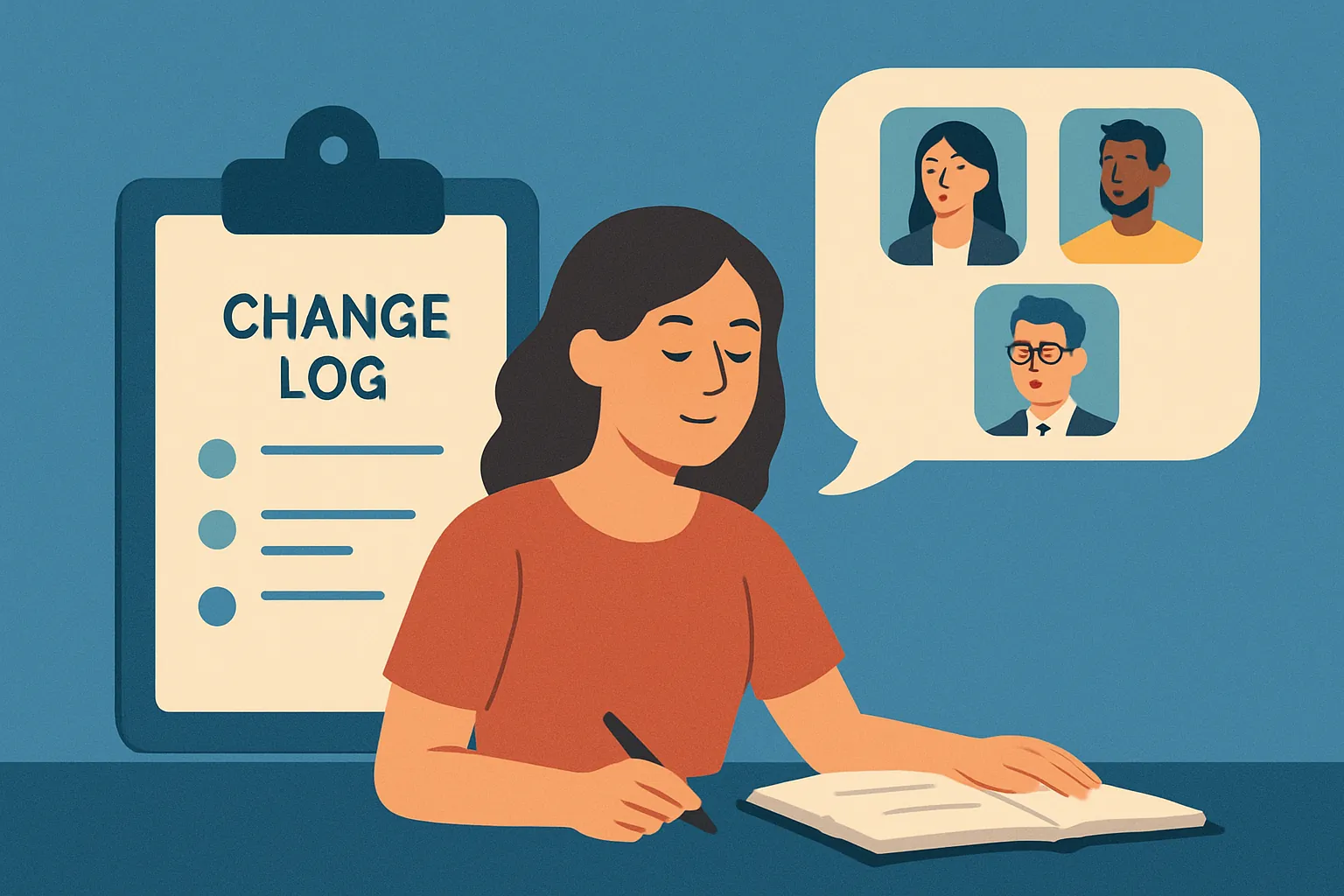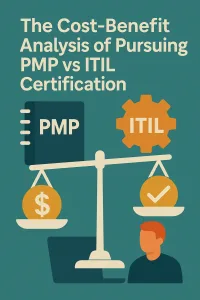Introduction to Change Logs
A change log serves as a critical tool for documenting alterations made throughout the project lifecycle. It is essentially a record that captures all changes, including modifications to project scope, timelines, resources, and deliverables. Understanding the definition and significance of change logs is essential for project managers and stakeholders alike.
Definition of Change Logs and Their Importance
A change log is a systematic record that outlines all changes made to a project, detailing what was changed, why it was changed, and who authorized the change. This documentation is vital for several reasons:
- Transparency: Change logs promote transparency by providing a clear account of all modifications, ensuring that all stakeholders are aware of the project’s evolution.
- Accountability: By documenting who approved changes, change logs help establish accountability among team members and stakeholders, which is crucial for maintaining trust and integrity within the project.
- Historical Reference: They serve as a historical reference that can be invaluable for future projects, allowing teams to learn from past decisions and their impacts.
How Change Logs Facilitate Communication
Effective communication is paramount in project management, and change logs play a significant role in enhancing this communication. They act as a central repository of information that can be easily accessed by all stakeholders, ensuring that everyone is on the same page regarding project developments. This is particularly important in complex projects where multiple parties are involved, as it helps to:
- Minimize Misunderstandings: By providing a clear record of changes, change logs help reduce the potential for misunderstandings among team members and stakeholders.
- Encourage Collaboration: When stakeholders are informed about changes, they can provide timely feedback and contribute to discussions, fostering a collaborative environment.
The Role of Change Logs in Tracking Project Modifications and Decisions
Change logs are instrumental in tracking not only the modifications made to the project but also the decisions that led to those changes. This tracking is essential for several reasons:
- Monitoring Progress: By keeping a detailed account of changes, project managers can monitor the project’s progress and assess whether it is on track to meet its objectives.
- Evaluating Impact: Change logs allow teams to evaluate the impact of changes on the overall project, helping to identify any potential risks or issues that may arise as a result of modifications.
- Facilitating Reviews: They provide a basis for project reviews and audits, enabling stakeholders to assess the effectiveness of change management processes and make informed decisions moving forward.
The Importance of Stakeholder Engagement
In change management, stakeholder engagement is not just beneficial; it is essential. Engaging stakeholders effectively can significantly enhance communication and ensure that everyone involved is informed and aligned with the project’s objectives. Here are some key points to consider regarding the importance of stakeholder engagement in the change management process:
- Understanding Stakeholders and Their Interests: Identifying who the stakeholders are is the first step in effective engagement. Stakeholders can include team members, clients, suppliers, and even the community. Each group has its own interests, expectations, and levels of influence over the project. By analyzing these factors, project managers can tailor their communication strategies to address the specific needs and concerns of each stakeholder group, ensuring that no one feels overlooked or undervalued [1][4].
- Impact of Change on Stakeholders: Changes in a project can have varying effects on different stakeholders. For instance, a change in project scope may require additional resources or adjustments in timelines, which can directly impact team members and clients. Keeping stakeholders informed about these changes is crucial, as it helps manage expectations and reduces resistance. Effective communication about the nature of the change, its implications, and the rationale behind it fosters a sense of inclusion and transparency [2][6].
- Benefits of Stakeholder Engagement for Project Success: Engaging stakeholders throughout the change management process can lead to numerous benefits. It enhances collaboration, as stakeholders who feel involved are more likely to contribute positively to the project. Furthermore, effective engagement can lead to better decision-making, as diverse perspectives are considered. Ultimately, projects that prioritize stakeholder engagement tend to experience higher levels of satisfaction and support, which are critical for achieving project goals and ensuring long-term success [3][7][8].
Creating an Effective Change Log
Maintaining clear communication with stakeholders is crucial for the success of any project. One of the most effective tools for enhancing this communication is a well-structured change log. A change log serves as a record of all changes made throughout the project lifecycle, ensuring that everyone involved is informed and aligned. Here are some key points to consider when creating an effective change log:
Essential Components of a Change Log
- Date: Each entry in the change log should include the date when the change was made. This helps in tracking the timeline of changes and understanding the sequence of events.
- Description: A clear and concise description of the change is vital. This should detail what the change entails, why it was necessary, and any relevant context that stakeholders need to understand its significance.
- Impact: It is important to assess and document the impact of the change on the project. This includes how it affects timelines, budgets, resources, and overall project goals. Stakeholders should be made aware of both positive and negative implications.
- Responsible Party: Identifying who is responsible for implementing the change is essential. This not only clarifies accountability but also provides a point of contact for stakeholders who may have questions or need further information regarding the change.
Best Practices for Documenting Changes Effectively
- Consistency: Use a consistent format for all entries in the change log. This makes it easier for stakeholders to read and understand the information quickly. Consider using templates to standardize the documentation process.
- Timeliness: Update the change log promptly after a change occurs. Delays in documentation can lead to confusion and miscommunication among stakeholders.
- Accessibility: Ensure that the change log is easily accessible to all stakeholders. This could be through a shared document, project management software, or a dedicated section on the project’s website.
- Regular Reviews: Schedule regular reviews of the change log with stakeholders. This not only keeps everyone informed but also provides an opportunity to discuss any concerns or questions regarding the changes.
Customizing Change Logs to Fit Project Needs
Every project is unique, and so are its requirements for documentation. Here are some ways to customize your change log:
- Tailor Components: Depending on the nature of the project, you may want to add additional components to your change log. For instance, you might include a section for stakeholder feedback or a status update on the implementation of changes.
- Use Visual Elements: Incorporating visual elements such as charts or graphs can enhance the readability of the change log. This is particularly useful for projects with numerous changes, as it allows stakeholders to quickly grasp the overall impact.
- Integrate with Other Documentation: Consider linking the change log with other project documentation, such as meeting minutes or project plans. This creates a comprehensive view of the project’s evolution and helps stakeholders understand the context of changes.
By following these guidelines, project managers can create a comprehensive and useful change log that not only documents changes but also enhances communication and engagement with stakeholders. A well-maintained change log is an invaluable resource that fosters transparency and collaboration, ultimately contributing to the success of the project.
Enhancing Communication through Change Logs
Effective communication is paramount for ensuring that all team members and stakeholders are aligned and informed. One of the most powerful tools for enhancing communication is the change log. This document not only tracks changes but also serves as a vital communication tool that can significantly improve stakeholder engagement. Here are some key points on how change logs can enhance communication among project teams and stakeholders.
Methods for Sharing Change Logs with Stakeholders
- Accessibility: Ensure that the change log is easily accessible to all stakeholders. This can be achieved by using shared platforms such as project management software or cloud-based storage solutions. When stakeholders can access the change log at any time, it fosters transparency and keeps everyone informed about the latest developments [6].
- Regular Updates: Schedule regular updates to the change log and communicate these updates to stakeholders. This could be done through email notifications or project management tools that alert stakeholders when changes are made. Consistent communication helps maintain engagement and ensures that stakeholders are aware of any modifications that may impact their interests [2].
- Visual Summaries: Utilize visual aids such as charts or dashboards to summarize key changes in the change log. Visual representations can make complex information more digestible and can be particularly effective during presentations or stakeholder meetings [5].
Utilizing Change Logs as a Communication Tool During Meetings and Updates
- Meeting Agendas: Incorporate the change log into meeting agendas. By discussing the change log during meetings, project managers can ensure that all team members and stakeholders are on the same page regarding recent changes and their implications. This practice encourages active participation and allows for immediate feedback [4].
- Highlighting Impact: Use the change log to highlight the impact of changes on project timelines, budgets, and deliverables. By clearly communicating how changes affect the project, stakeholders can better understand the rationale behind decisions and their potential consequences [8].
- Facilitating Discussions: The change log can serve as a focal point for discussions during project updates. By referring to specific entries in the change log, project managers can facilitate more structured and informed conversations, allowing stakeholders to voice their concerns or suggestions based on documented changes [7].
Case Studies or Examples Demonstrating Effective Communication via Change Logs
- Case Study 1: Software Development Project: In a software development project, the project manager implemented a change log that was updated in real-time and shared with all stakeholders. During bi-weekly meetings, the team reviewed the change log, which led to improved understanding of feature updates and bug fixes. Stakeholders appreciated the transparency, which resulted in increased trust and collaboration [3].
- Case Study 2: Construction Project: A construction project utilized a change log to document changes in design and materials. The project manager shared the log with stakeholders through a dedicated online portal. This approach allowed stakeholders to track changes and their implications on project timelines. As a result, the project team received timely feedback, which helped in making informed decisions and maintaining project momentum [5].
Integrating Change Logs into Project Management Tools
Maintaining clear communication and documentation is essential for success. One effective way to enhance this communication is through the use of change logs. By integrating change logs into project management tools, project managers can ensure that all stakeholders are kept informed about modifications, updates, and decisions throughout the project lifecycle. Here are some key points to consider regarding the integration of change logs into project management tools.
Popular Project Management Tools that Support Change Log Features
Several project management tools offer built-in features for managing change logs, making it easier for teams to document and track changes. Some of the most popular tools include:
- Jira: Known for its robust issue tracking capabilities, Jira allows teams to create detailed change logs that can be linked to specific tasks and issues, providing a clear history of changes made.
- Trello: With its card-based system, Trello enables users to add comments and attachments to cards, effectively serving as a change log for project updates and decisions.
- Asana: Asana’s project tracking features include the ability to comment on tasks and track changes, allowing teams to maintain a comprehensive change log within their project boards.
- Microsoft Project: This tool offers advanced project management features, including the ability to track changes and generate reports that can serve as change logs for stakeholders.
Benefits of Integrating Change Logs into Existing Project Management Workflows
Integrating change logs into project management workflows offers numerous benefits:
- Improved Transparency: Change logs provide a clear record of what changes have been made, when, and by whom, fostering transparency among team members and stakeholders.
- Enhanced Accountability: By documenting changes, teams can hold individuals accountable for their contributions and decisions, which can help mitigate misunderstandings and conflicts.
- Streamlined Communication: Change logs serve as a centralized source of information, reducing the need for lengthy email threads or meetings to discuss updates, thus saving time and resources.
- Better Decision-Making: With a comprehensive view of changes, project managers and stakeholders can make informed decisions based on the most current information available.
Tips for Training Teams on Using Digital Change Logs
To ensure that teams effectively utilize digital change logs, consider the following training tips:
- Provide Comprehensive Training: Offer training sessions that cover the specific features of the project management tool being used, focusing on how to create, update, and access change logs.
- Encourage Regular Updates: Emphasize the importance of regularly updating change logs to reflect the most current project status. Encourage team members to make it a habit to log changes as they occur.
- Create a Standardized Process: Develop a standardized process for documenting changes, including templates or guidelines that outline what information should be included in the change log.
- Foster a Culture of Communication: Encourage open communication among team members about the importance of change logs and how they contribute to project success. Highlight examples of how effective change logging has benefited past projects.
By leveraging technology to integrate change logs into project management tools, project managers can enhance communication, improve stakeholder engagement, and ultimately drive project success.
Challenges in Maintaining Change Logs
Change logs are essential tools in project management, serving as a record of all modifications made throughout the project lifecycle. However, maintaining effective change logs can present several challenges for project managers. Here are some common pitfalls and strategies to enhance communication through effective documentation.
Common Pitfalls in Change Log Documentation
- Inconsistent Updates: One of the most frequent issues is the irregular updating of change logs. When changes are not documented promptly, it can lead to confusion and miscommunication among team members and stakeholders. This inconsistency can stem from a lack of clarity on who is responsible for updates or the timing of those updates [5].
- Lack of Detail: Change logs that lack sufficient detail can hinder understanding. If the entries are vague or incomplete, stakeholders may not grasp the implications of changes, leading to misalignment in expectations and project goals [8].
- Poor Communication: Often, project managers struggle with effectively communicating the importance of change logs to stakeholders. This can result in stakeholders not engaging with the logs or understanding their significance, which can further complicate project tracking and accountability [6].
Strategies to Overcome Resistance from Stakeholders
- Educate Stakeholders: To mitigate resistance, it is crucial to educate stakeholders on the value of change logs. Highlighting how these logs enhance transparency and facilitate better decision-making can encourage buy-in. Providing training sessions or workshops can also help stakeholders understand how to use change logs effectively [3].
- Involve Stakeholders in the Process: Engaging stakeholders in the creation and maintenance of change logs can foster a sense of ownership. By involving them in discussions about what changes should be logged and how, project managers can reduce resistance and improve the quality of the documentation [4].
- Simplify the Process: Streamlining the change log process can make it easier for stakeholders to contribute. Utilizing user-friendly tools or templates can help ensure that updates are made consistently and accurately, reducing the burden on stakeholders [7].
Maintaining Consistency and Accuracy in Change Log Updates
- Establish Clear Guidelines: Setting clear guidelines for what constitutes a change and how it should be documented is vital. This includes defining the format, required details, and timelines for updates. By having a standardized approach, project managers can ensure that all team members are on the same page [2].
- Regular Reviews: Conducting regular reviews of the change log can help maintain its accuracy and relevance. This practice allows project managers to identify any discrepancies or outdated information and address them promptly, ensuring that the log remains a reliable resource [1].
- Utilize Technology: Leveraging project management software that includes change log functionalities can enhance accuracy and consistency. These tools often provide automated reminders for updates and can facilitate easier collaboration among team members, making it simpler to keep the change log current [9].
By addressing these challenges and implementing effective strategies, project managers can enhance communication and stakeholder engagement through well-maintained change logs. This not only improves project tracking but also fosters a collaborative environment where all parties are informed and aligned.
Conclusion and Best Practices
Change logs serve as a vital tool for maintaining clarity and transparency among all stakeholders. They play a crucial role in documenting changes, decisions, and the rationale behind them, which is essential for effective project management. Here’s a recap of the key points regarding the role of change logs and best practices for their use:
Role of Change Logs in Effective Project Management:
Change logs are instrumental in tracking modifications throughout the project lifecycle. They provide a historical record that helps project managers and stakeholders understand the evolution of the project, ensuring that everyone is on the same page regarding what has changed, why it has changed, and how it impacts the overall project objectives. This documentation fosters accountability and aids in decision-making processes, ultimately leading to more successful project outcomes [10][11].
Best Practices for Using Change Logs:
- Regular Updates: Ensure that change logs are updated consistently and promptly after any change occurs. This practice helps maintain an accurate and current record, which is essential for effective communication [12].
- Clear and Concise Entries: Each entry in the change log should be clear and concise, detailing the nature of the change, the reason behind it, and its implications. This clarity helps stakeholders quickly grasp the significance of each change [11].
- Stakeholder Involvement: Engage stakeholders in the change documentation process. Their input can provide valuable insights and foster a sense of ownership, which enhances their commitment to the project [15].
- Utilize Technology: Leverage project management tools and software that facilitate the creation and maintenance of change logs. These tools can streamline the documentation process and make it easier for stakeholders to access and review changes [14].
- Encouragement for Project Managers: Project managers should prioritize change documentation as an integral part of their project management strategy. By doing so, they not only enhance communication but also build trust and collaboration among stakeholders. A well-maintained change log can significantly improve stakeholder engagement, ensuring that everyone remains informed and aligned with the project’s goals [13][15].
In conclusion, effective documentation through change logs is essential for successful stakeholder engagement in project management. By implementing best practices and prioritizing change documentation, project managers can enhance communication, foster collaboration, and ultimately drive project success.
Find out more about Shaun Stoltz https://www.shaunstoltz.com/about/.
This post was written by an AI and reviewed/edited by a human.



